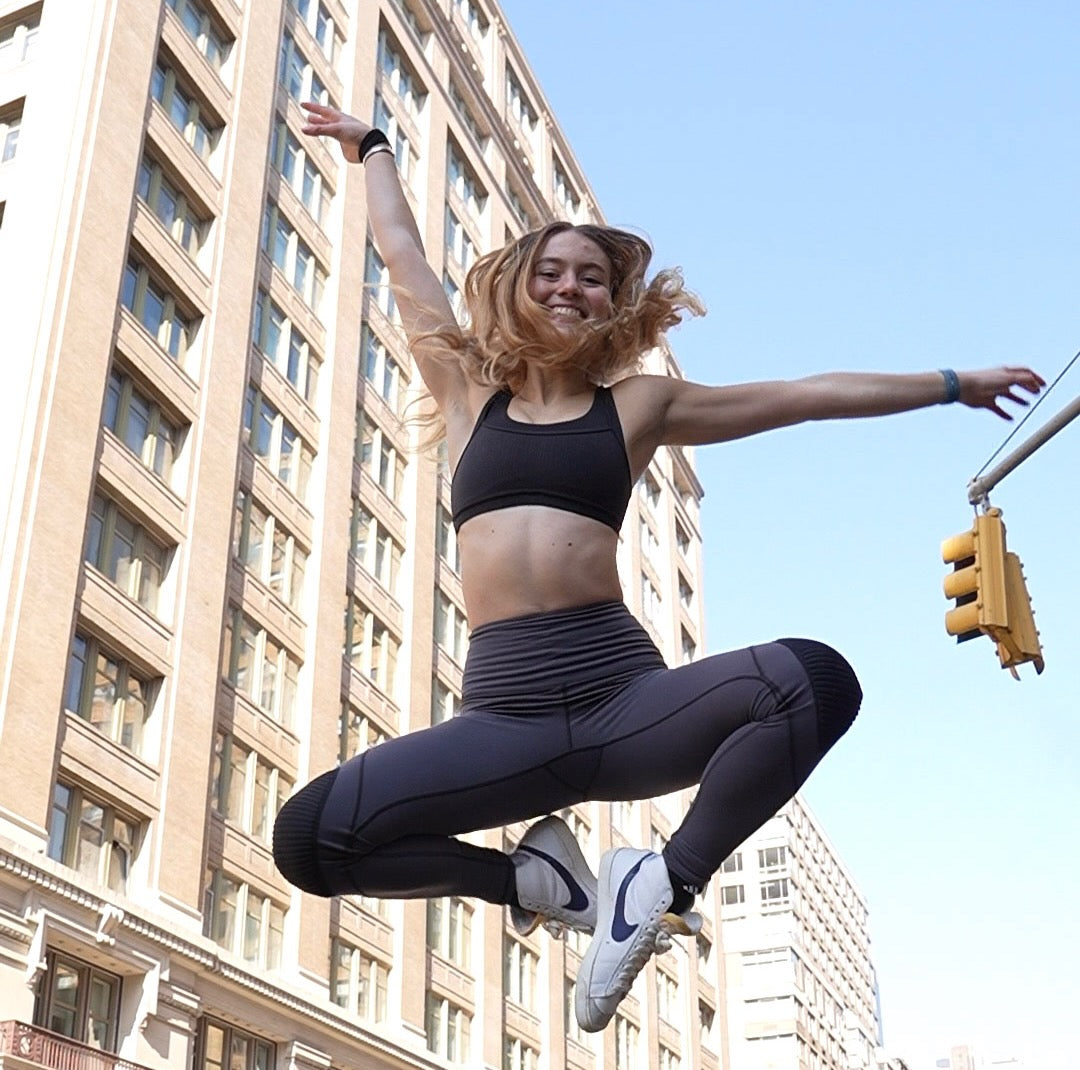Happy Leap Day! To celebrate, we’ve been exploring leaping’s close cousin, jumping, and the effects it has on our bodies, minds and spirits. Read on for all the benefits and recommendations.
Jumping is overwhelmingly good for your body: On the physical level, it improves your cardiovascular health by getting your heart rate up, which trains your body to move oxygen and blood to your muscles more efficiently; this also lowers your cholesterol and helps burn more calories. Even after you finish jumping, you’ll likely have an elevated post-exercise metabolic rate, so you’ll continue to burn more calories. Jumping strengthens and tones the muscles in your legs, core and (surprisingly) even your arms, so it’s truly a full body workout. In young people, jumping has been shown to improve bone density when done consistently. It also helps to improve coordination and balance.
The benefits to your mind and body are powerful: Jumping (like any moderate exercise) causes your body to release endorphins - naturally occurring chemicals that increase feelings of well being, ease symptoms of depression and put you in a positive mind state. Elevated heart rates and improved circulation can lead to increased energy levels and feelings of vitality. Activities that we did as kids such as jumping rope and trampoline jumping can be playful and fun - a light hearted defense against daily stress and anxieties. Greater blood flow and oxygenation to the brain from jumping can potentially boost brain power and focus; and jumping without forethought, as happens during dance class or parkour, requires quick thinking, which further promotes mental agility. The rhythmic nature of some jumping activities can turn them into a moving meditation - where repetition and focused attention can clear your mind in the same way repeating a mantra does.
The one drawback to jumping is the stress that it puts on joints, potentially increasing the risk of injuries such as strains, sprains or fractures. If you have any sensitivity or a preexisting injury, speak with your doctor.
Here are a couple of things to think about when jumping:
- Take time to warm up. Stretch and maybe even take a few small jumps or bounces.
- If you have balance issues, lightly hold onto something for support.
- When landing, bend your knees to absorb the impact and keep them over your feet, not letting them fall inward or past your toes.
- Land on the balls of your feet (then distribute your weight from toes to heels) to absorb the impact.
- Soft surfaces like grass or rubber mats will reduce the impact on your joints. Be aware that some artificial surfaces are soft but slippery, so not great for jumping.
- Start with slow, purposeful movements, making sure your alignment is correct. Once you’re sure that it is (or made any needed corrections) you can increase speed and duration, should you choose.
So, should we all take the leap (or jump)?
Yes - assess the ground, perfect your form and go for it!

